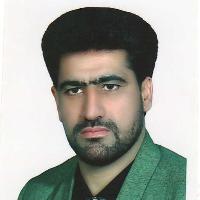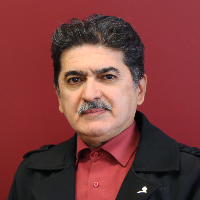The Discourse Constructions of Human Objects and Subjects in Zell-e- Soltan's Personal Photographs Based on Gillian Rose's Discourse Analysis
The Discourse Constructions of Human Objects and Subjects in Zell-e- Soltan's Personal Photographs Based on Gillian Rose's Discourse Analysis Photographs and visual documents of the Qajar era reflect innumerous cultural and social values, and therefore, it is essential to pay particular attention to this treasure as a prominent history of Iran's visual culture and art. Thus, building on qualitative and interdisciplinary method of Gillian Rose's discourse analysis, this descriptive - analytical study investigated the interactions and relationships between the participants (photographer, photography object and subject, camera and audience) in the production and consumption of the purposefully selected Zell-e-Soltan's personal photographs in portrait and social documentary genres, as well as how each participant is constructed, and examined the role of power discourses and institutions in how they are constructed in such relationships. In order to answer the question that what discourses, objects, and subjects are constructed and how they are constructed during such interactions and relationships, this study achieved some results that show the mutual effectiveness of socio - political discourses and objects and subjects in constructing one another. In this process of construction, the object in front of the camera is affected by the hidden and virtual influence of power apparatuses such as photography, and more importantly Zell-e-Soltan's monitoring and hegemonic apparatus, automatically disciplines its body and casts it in a special form, and normalizes it (distorted body). In such a monitoring process, all apparatuses are a subset of a discourse: Zell-e-Soltan's discourse. Such discourses as power, patriarchy, modernity, and discipline revolve around this political - feudal discourse, constructed through the accompanying codes of objects and subjects in photographs. In the photographic discourse of Zell -e-Soltan, a group of objects (subjects, servants and slaves, and ordinary people) are aware that they will be seen, but they are not able to see themselves, and another group (courtiers, officials, and at their head the ruler). They are aware that they both see and are seen. Now, if we consider discourse as a context in which the photographic object is both able to be seen and visible when it becomes the subject of the photograph, then it can be acknowledged that the central discourse of Zell-e-Soltan is a "Regulatory", "disciplinary" and "non-dialectical"discourse. In the study and discourse analysis of this collection of photographs, the discourses of "power", "feudalism", "patriarchy", "modernity", "disciplinary" and "respect and order" were also constructed as forms of central discourse. In this discourse, the production of these photographs is reserved for the ruler and to some extent the photographer, and their consumption is limited to the ruler, and their circulation has been completely stopped by accumulation and archiving (with self-improvement and personal ownership).Keywords: discourse analysis, photograph, Qajar era, Isfahan, Zell-e-Soltan
-
Analysis of the Photographicity in 1390’s Iranian Art Photography Based on François Soulages' Perspective
Soudabeh Shaygan *,
Journal of Jelve-y Honar, -
A Comparative Study of Portraits of the Preceding Kings and Recent Kings of Qajar Engraved on Coins and Medals in Terms of Sociological Semiotics
*
Journal of Motaleate-e Tatbighi-e Honar, -
Discursive constructs of Velázquez’s Las Meninas and Abd-ol-Khalegh Khan’s photograph of Zell-e Soltan as seen through Gillian Rose’s discourse analysis
*, , Sayyed Mahdi Moghimnejad
Journal of Pazhuhesh-e Honar,



